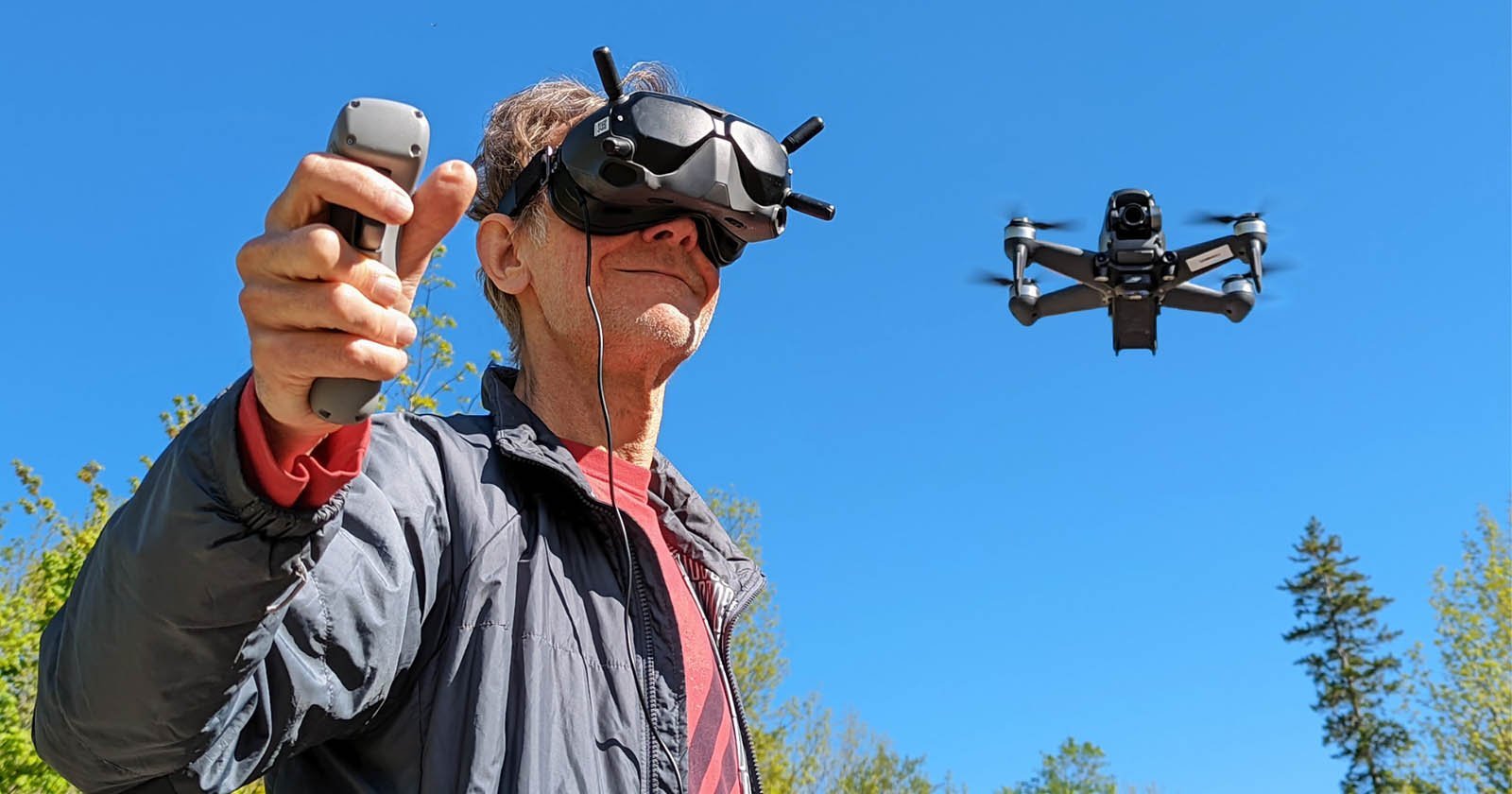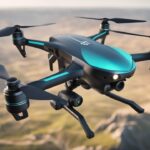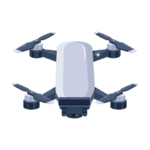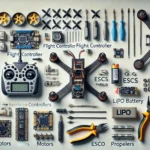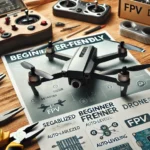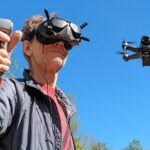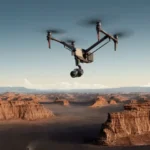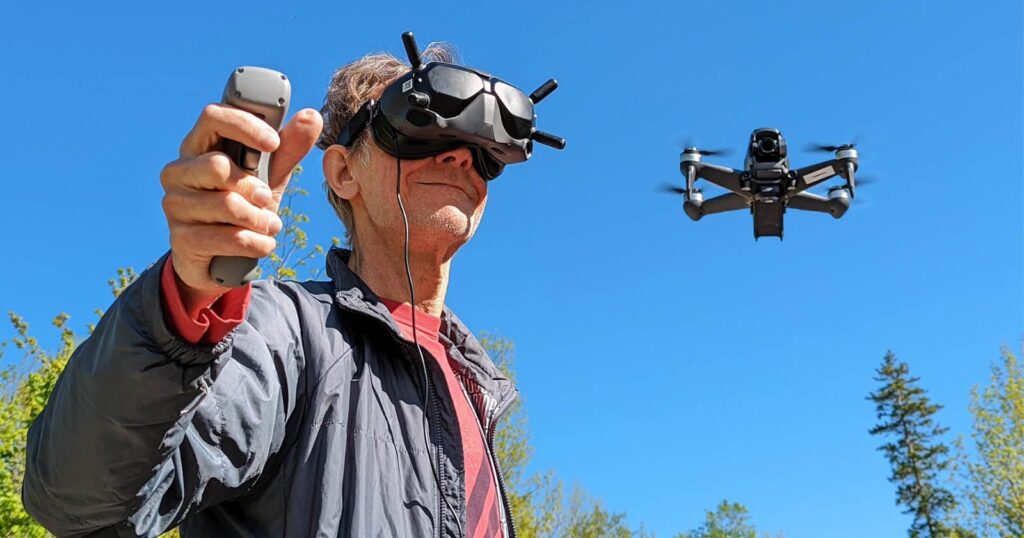
FPV, or First-Person View, is just what it sounds like: seeing the world through the drone’s camera. An FPV drone has a camera that provides live video to the pilot’s goggles or a screen, making it feel like you’re in the drone. This makes them quite different from drones that just give you a view from the ground.
How FPV Drones Operate
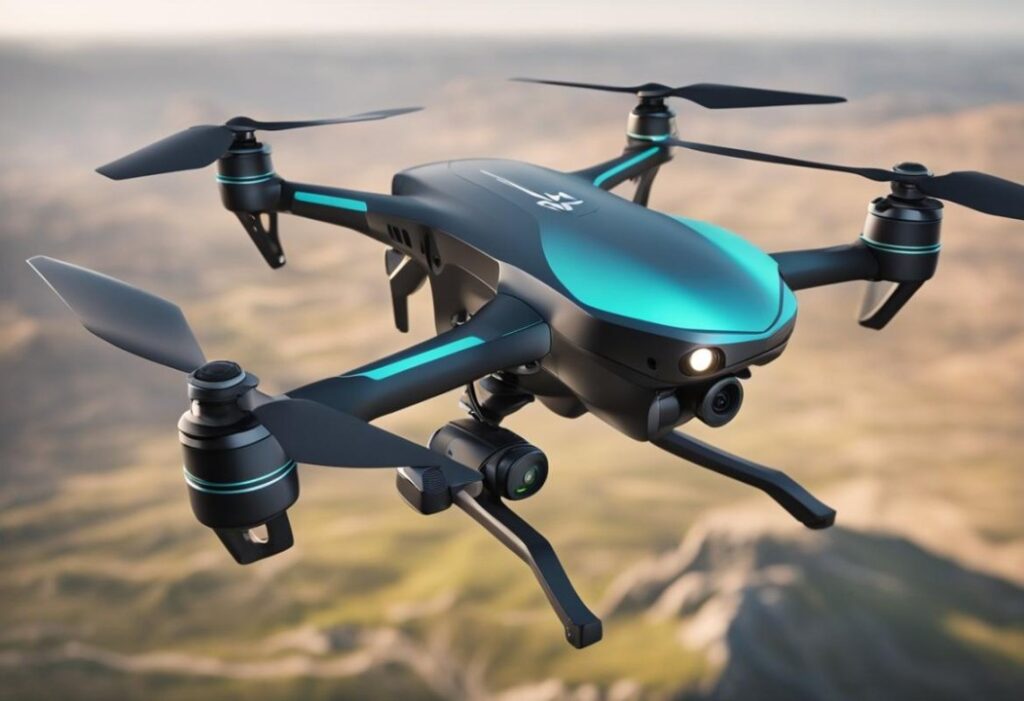
The tech is pretty straightforward. Really, a few key parts work together. They consist of a couple different things overall honestly.
- There’s a camera for live video which has to transmit live. These have to be small because lightweight needs to stay important. Getting those clean and super useful videos makes all the huge difference.
- What Sends the Video? Wireless systems send a video feed using something like radio waves (it uses radio waves btw—mostly around the 5.8 GHz signals to get that done smoothly but not usually). And you want the live visual transmission, right? Near instantaneous transmission gives these huge qualities. Amazing stuff really helps bring the product quality so much better overall, so they usually don’t experience annoying lags.
- There also needs to be a display or something that shows this, like using FPV goggles. Goggles completely immerse pilots, often covering a pilot’s field of view while giving a view upwards of like a hundred something degrees—that’s amazing. Or an external monitor attached to the user’s body can maximize those cool benefits. Using an external monitor is fine as an alternative option for displaying some pretty crazy, awesome stuff, but sometimes a set of goggles may be easier too.
- Transmitters usually control and send a bunch of important signals to utilize their drone systems. A specialized type of transmitter sends out lots of signals to adjust direction, speed, and all the super important factors for successful navigation through complicated maneuvers that require superb speeds. These signals are for adjusting the many variables needed.
Why Choose an FPV Drone?
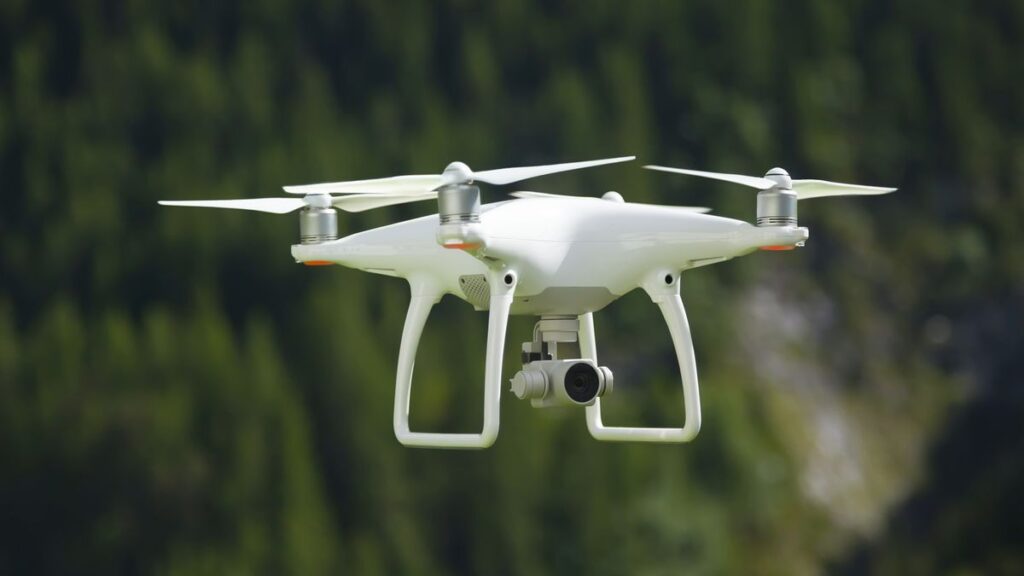
Normal (other regular non-FPV styled systems) drones are just way inferior honestly. It’s easier and can take simple aerial footage or stable shots, but an immersive flight of such magnitudes is only experienced by FPV-styled drones. FPV drones bring users more benefits, usually better than those alternatives. Here’s a couple of situations where people typically prefer FPV models because this style makes flight awesome. There are:
- Feeling Immersive: The intense sensation provided actually brings users into the flying experience. It’s cool to feel like you’re flying, which brings a huge appeal. This is especially true for people who want to enjoy action and thrills in extreme scenarios. Activities like:
- Superb Control: FPV drones usually demand super-quick precision—which are the standards required for really advanced skills. For actions requiring precise, responsive control, it’s necessary to constantly check everything, and seeing what your pilot view shows makes it much more precise. It’s quite hard with traditional alternatives, mostly because they rely only on what phones or mounted screens show. These alternatives can’t be as easy to use compared to FPV drones because the amount of information displayed is much higher.
- Drone Racing: FPV drones become very good with this sport. Actually, that’s what helped boost the popularity of drone racing. Courses involve indoor and outdoor events, with obstacles. Pilots using FPV drones need these speedy maneuvers to avoid obstacles, which are done so quickly. Racing grew quickly and expanded beyond typical hobbyist boundaries, becoming a big collaborative and passionate community. Drone racing is now very popular due to its passionate fans.
- Video and Cinematic Footage: FPV drones can take higher quality, cinematic footage than simpler models, improving some things like perspectives. Although traditional aerial photography and filmmaking were totally changed, new FPV tech adds exciting perspectives—especially for tight spaces and high-speed stunts. This makes FPV drones incredibly useful for capturing insane shots. Many filmmakers love the improved quality; it’s simply undeniable.
FPV Drone Types: There Are Many Options!
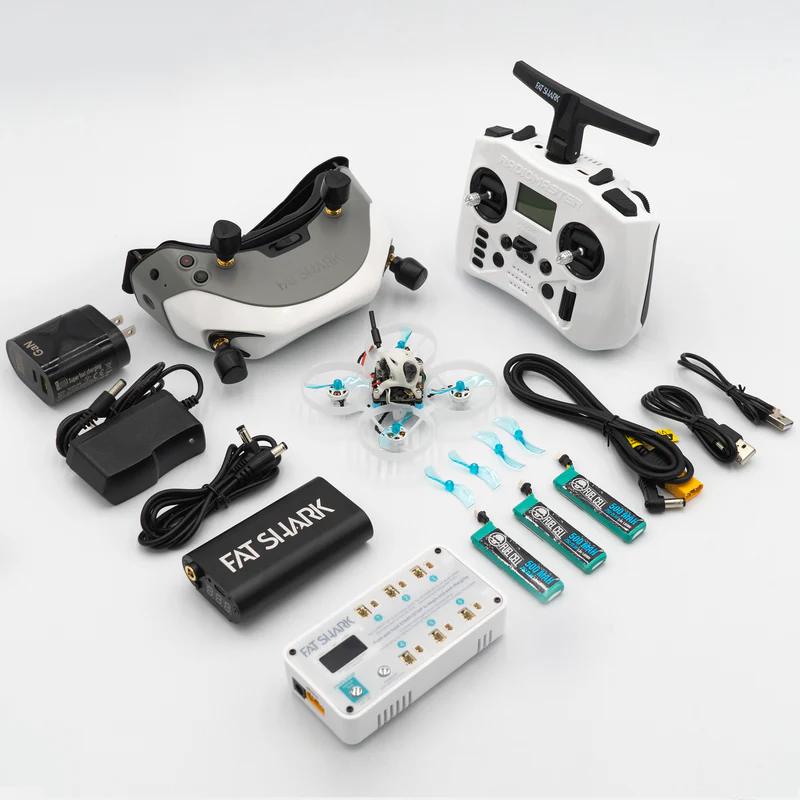
There are plenty of choices, and many kinds of FPV drones for all types of users to pick up these amazing things.
- Racing: These focus primarily on being strong, agile, light, and super fast. That high power helps them achieve crazy speeds (often above 100 mph). Racing drones are often used in high-competition environments with professional racers.
- Freestyle Pilots: This style of drone is designed for acrobatics, tricks, and crazy stunts. They are built to withstand rough wear and tear, with high-impact designs that prioritize build quality. Pilots enjoy performing flips, loops, and other maneuvers that require flexibility. These drones are highly sought after in the FPV community, and pilots often become well-known for showcasing their incredible skills. They love showing off their skills, which often gets many viewers.
- Cinematic FPV Systems: These drones are focused specifically on better video filming. They are used by professional filmmakers, with high-quality equipment designed for cinematic footage. These systems ensure smooth footage with no lag, even during extreme maneuvers and high-speed flights. They’re often used in movies and commercials to capture incredible aerial imagery, making scenes better overall. These are typically pro tools, so they are quite valuable for high-budget projects.
- Whoops (Smaller Drones): These little drones are compact and lightweight, often used for indoor flights. Surprisingly, they are quite capable and have compact designs, making them ideal for unique creative filming techniques. They are especially useful for indoor flying, allowing for amazing filming opportunities in confined spaces.
Challenges & Considerations
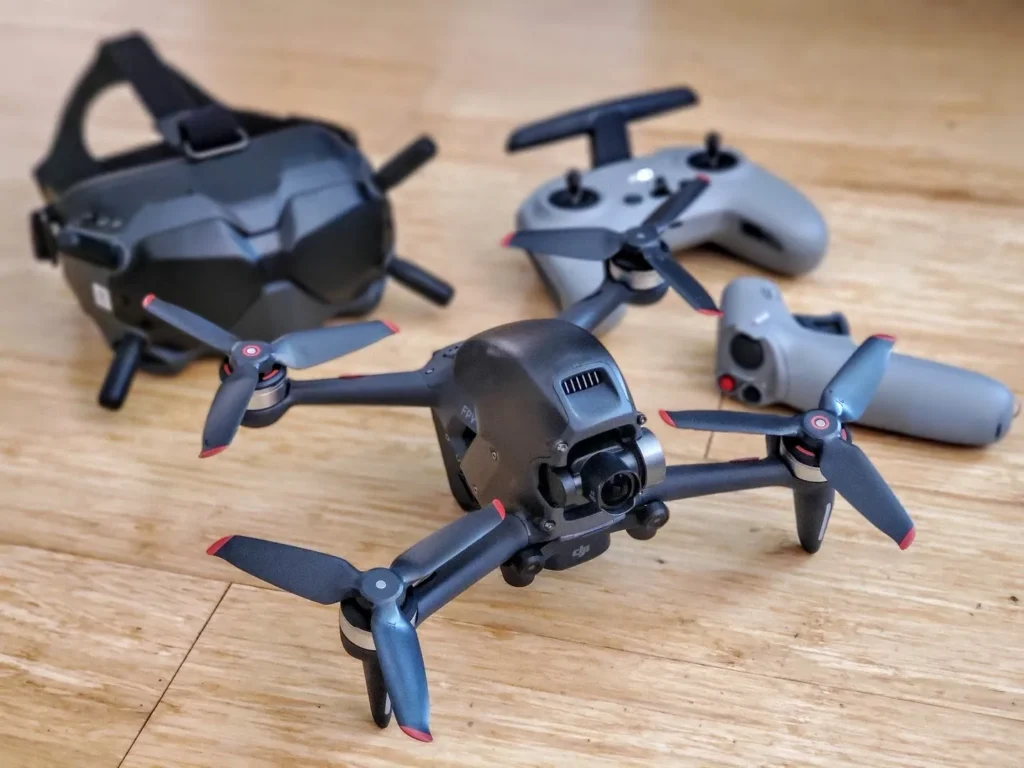
FPV isn’t just a breeze—these drones can be quite challenging to master. Here are a few obstacles:
- Skill Curve: There’s a serious skill curve for many people, and it often requires practice. Pilots must learn to control the drone while also managing the constantly changing camera view. This requires adjusting altitude, direction, and angle of view. Beginners often use simulators to help ease the learning process before going on live flights.
- Lower Battery Life: Sadly, battery life is a serious drawback for long trips, especially with FPV drones. These drones are powered by high-motor systems and intense camera systems, meaning they have shorter battery lives. Depending on the size and weight of the drone, most FPV drones last for anywhere from 5 to 15 minutes of flight time.
- Regulations Matter: Like all flying activities, FPV drones are subject to local regulations. These rules depend on where you’re flying and can vary from country to country or even region to region. It’s essential to know the rules in your area and always follow safety procedures. This is crucial for reducing risks and ensuring safety, as FPV drones are often flown at very high speeds and extreme maneuvers.
The Upcoming FPV Future and Conclusion
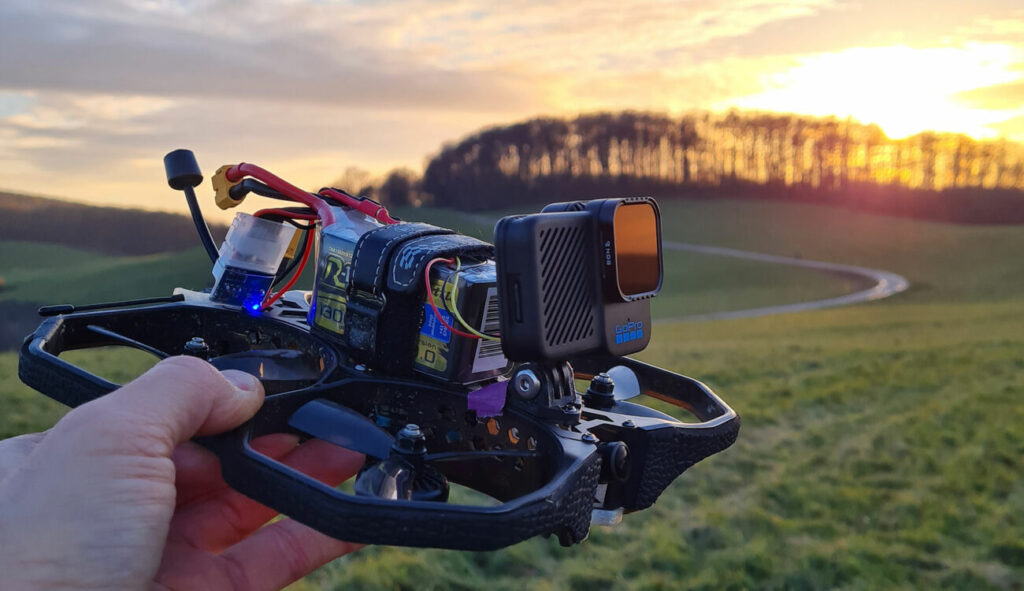
This is still a relatively new and advancing area, but FPV drones bring excitement to many different places. Whether it’s racing, capturing shots, or enjoying the thrill of flying, FPV offers tons of variety and benefits for users. As technology advances, the usability of these drones continues to improve, with new innovations on the horizon. Ready to take your skills to the next level? Grab your goggles, practice, and soon you’ll be enjoying amazing flights with unique perspectives that make these drones so worthwhile.
